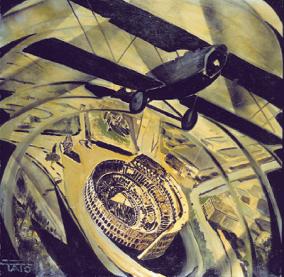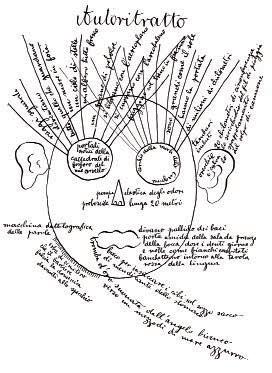
13 minute read
Light, sound and nature
from TWSM#1
Workplace Concepts, moods and styles

Advertisement
TRENDS Researchers have discovered more and more about the importance of light for human health and well being. Global warming also requires the search for more sustainable solutions to our energy use in lighting.
Light, sound and nature
03
The acronym LED stands for Light Emitting Diode and the organizers of Euroluce, the Biennial International Lighting Exhibition in Milan in April 2009, believe that this technology can very much be eco-friendly. An example of such a solution comes from manufacturer Artemide with four versions of its Tolomeo range of lamps featuring low energy consumption designed by Michele De Lucchi and Giancarlo Fassina. From ‘human light’ to ‘responsible light’ was a theme that Artemide brought to Salone (April) 2009, through a project by Carlotta de Bevilacqua which considers light as a conscious actor of natural, social and civil responsibility. Light steers our biological rhythm, hormone system and metabolism and this project affirms a commitment to designs for Artemide that will require less energy consumption. The notion of light as a seamless element that blends with other senses, including the olfactory, underpins “iOO6th Sense,” an interactive digital solution that was created by iO together with Oikos Fragrances. The computer program, integrated with aroma diffusers, allows the creation of multiple interactive digital lighting moods coupled with specific fragrance to create unique sensorial immersions. An experimental and spectacular composition of temporary construction T-Energy by Luca Trazzi, was also on display at Salone del Mobile 2009. The energy derived from power absorption during the day through solar panels is exploited at night to light luminous panels, thus creating plays on lights and shadows derived from the tower’s structure.
OLD MATERIAL, NEW DESIGN, NEW TECHNOLOGY The search for ‘ancient wood’ from Europe’s old buildings and roofs and its re-cycling into unique pieces of (office) furniture is the mission of “Haute Material”, a ‘lab’ located in Valtellina just north of Milan. The result of collaboration between craftsman Joseph Pruneri, and designer Renato Geraci, Haute Material’s masterpiece includes its 12-seat meeting table “Genesis” crafted from antique raw pine that seamlessly conceals multiple power sources and necessary connections for computers and other electronic devices essential to today’s business meetings. Unique pieces of ancient carpet styles were also exhibited by Nodus, a rug design project of Il Piccollo, a design company based in Milan. With a collection of 60 pieces created in 6 countries (Nepal, Pakistan, India, Turkmenistan, China and Turkey) these unique hand-woven rugs are based on exclusive patterns developed by major international designers.•
01
02
04
01 Michele de Lucchi e Giancarlo Fassina, Tolomeo XXL, byArtemide. 02 The meeting table ‘Genesis’ projected by Giuseppe Pruneri for Haute Material. 03 Some pieces of 60 unique hand-woven rugs created in 6 countries (from Nepal to Turkey) for Nodus. 04 T-Energy, the 15 meters metal tower made by Luca Trazzi during the exibition organised by Interni at the Università degli Studi in Milan, April, 21-30, 2009. ws m — #1.09 t
Art Futurism
By MATTEO BIANCHI
A CRITICAL READING In 1909, Filippo Tommaso Marinetti published the Futurist Manifesto in Paris. Somewhat predictable and vastly unrealistic, the manifesto includes two articles, 9 and 10, which were decidedly offensive. Futurism he, proclaimed, aimed “to glorify warfare, the sole means of cleansing the world, as well as militarism, patriotism, the destructive deeds of anarchists, fine and murderous ideas and contempt for women.” Moreover, Marinetti declared, “we aim to demolish museums and libraries, combat moralism, feminism and all opportunistic and utilitarian baseness”. In this article, Matteo Bianchi provides a critical reading of the futurist movement, its fascination for the triumph of technology and modernity, and whose centenary we are currently celebrating.

The history of Futurism
01
The current uncritical celebration of Futurism inspires us to reflect on the disparity between their declaring of evil intent and the resulting creation of undoubted works of quality. This analysis began many years ago and can be identified with the brilliant figure of Gian Pietro Lucini who, as early as 1913, wrote about “how I went beyond Futurism”. Lucini was the inventor of the free verse which preceded the freely flowing words of the futurists, the creator of the symbolist idea and also friend and unwitting role model for Marinetti. Lucini maintained that Futurism was another label applied to stale art products and called for a respect for historic monuments and the wonderful works housed in museums. He wrote that “museums and libraries validate nature through art” and proclaimed principles of harmony, sincerity and liberty, in both art and life. Further criticism levelled by the aristocratic and revolutionary Lucini against the authoritarian and overbearing Marinetti gives us an understanding of how futurist ferment and feverish endeavour led a path to Mussolini’s fascist regime of which Marinetti was a part. Lucini wrote in a letter to Marinetti, again in 1913: “I am one of the little known deceased who remain in libraries, in those factories that you wish to demolish yet cannot, and to which, in a few years’ time, you will humbly request admittance. This is a fact: those who enter parliament as members of the extreme opposition leave it as ministers...”. This is a bitter parable which illustrates how the futurists lost their bearings. However, alongside this justified critical rationalising, there were also more interesting elements to the futurist project.
CREATIVE MOVEMENT The symbolist roots of Futurism translated into the law of change, as proclaimed by Gustave Kahn, in the change from free verse to a free flow of words. It played out in the mobility of the strokes and via the subjects undergoing transformations. These shifts can be seen above all in works by Giacomo Balla and Umberto Boccioni. In the brief period during the early twentieth century, these artists speeded up and modified the form and content of their works. Boccioni, in particular, changed from a nineteenth-century painter in close contact with rural life into an artist focused on modern life. The change is marked by a painting of a field with a cow later replaced by a locomotive. Boccioni, who brilliantly depicted the rhythm of ‘states of mind’, also deconstructed the forms of speed or instilled his own social awareness into the energy of “La Città che Sale” (“The City Which Rises”). The move from divisionism to Futurism was swift and far-reaching. There was a change in the symbolist mood and the idealistic élan shifted towards machinery. The technique adapted was accordingly, fast and synchro-
Art Futurism
02
Matteo Bianchi, Founder of Pagine d’Arte. He has organised several exhibitions on figurative cultures between 1800 and 1900.
nised. The symbolist heritage of “correspondences” was transformed in the applications of the different art idioms, also outside of Italy where avant-garde experiments were taking shape. The visual writing of the poet Corrado Govoni was an ideal complement to the figurative poems of Apollinaire. In literature, the spontaneous research by futurists in the area of “the book as object” is particularly interesting, leading to the “tactile poem”, in the words of Giovanni Lista. The embracing of different idioms is successfully manifested in the works that

03
referenced the music of Francesco Cangiullo and Luigi Russolo, both engaging in colour and sound writing. The imaginary architectures of Sant’Elia are striking examples of the city “which rises”. It is however difficult to map out Futurism outside of Italy, with the exception of Russia, the destination of a journey by Marinetti in 1914 which was, in its own way, legendary. Thus the analogies with Larionov and Goncharova come as no surprise, although the works of Malevich are of a totally different order.
01 Tullio d’Albisola, Cover of Marinetti’s book Parole in libertà Futuriste tattili termiche olfattive Tin with folded edge. 1932. 23.3x23.8 cm. 02 Antonio Sant’Elia,The New City, Terracing House, 1914 pencil and coloured ink on paper; 27,5x11,5 cm. Private Collection. 03 Giacomo Balla, Rhythms of The String (Violinist’s Hand).1912. Oil on canvas. 52x75 cm. © Estorick Collection, London, Uk / The Bridgeman Art Library.
BEYOND THE “ISMS” These avant-garde initiatives are interwoven through the different figurative cultures of Europe that did not always match. Dada in Zurich and Cubism in Paris expressed idioms with total independence yet at the same time interpreted common attitudes with regards to the break with tradition. Once the initial drive had died down, the fervour of the “isms” was quelled by convention and another artistic renewal took place elsewhere. In Italy the belated futurist response was jaded and formal, while a return to figurative order took place
Art Futurism

05 04

The best response to the noisy futurist environment, to its statements and departures comes from the quiet of painting linked to the classical tradition, the attempt to regain a sense of lost intimacy among the laws of the regime and the shouting in public places.
via the Novecento School, and represented by the metaphysical paintings of Giorgio De Chirico. Carlo Carrà, Mario Sironi and Ardengo Soffici established its language, style and subject matter. Their strong and unusual images are reconstructed in the intensity of a poetic sphere which goes beyond experimentation and experiences, and via collective exhibitions. This was a significant outreach beyond national borders, Rossana Bossaglia explained. Boccioni still stands apart and in a different world, in the critical account by Zeno Birolli. It is a synthesis of a unique body of work which encapsulates the qualities of change and is never limited to the outward signs of mere participation in a movement. The best response to the noisy futurist environment, to its statements and departures comes from paintings linked to the classical tradition, an attempt to regain a sense of lost intimacy among the laws of the regime and from its bluster in the public sphere. In this present time of crisis, there is a tendency towards unconditional acceptance of Futurism, and of its celebration by government bodies on the occasion of its centenary. The intent here is to apply a critical yardstick to the movement which should be interpreted with due restraint, in order to reject its official stance while drawing out those precious jewels which, despite everything, the best artists have given to us. •


06
04 Tato, Spiral Flying Over the Colosseo , 1930. Olio su tela; 80x80 cm., Rome, Ventura Collection. 05 Fortunato Depero, Study for “Vogue”, 1922. Tempera on paper; 36x22 cm. Private Collection. 06 Corrado Govoni. Selfportrait (published in Rarefazioni e Parole in libertà, 1915). Futurism and the Fashion
Futurists considered fashion a major field of inquiry that broke with old balances as well as to overreach suffocating ‘bourgeois traditions’. As a first mover, they encouraged the unceasing allure of fashion, urging its continuous renewal. They attributed to fashion the task of reflecting ‘dynamism, energy and speed, typical of modern life’. Their scope was to express the relationship between art and daily life. Clothes were perfectly part of the futurist reconstruction of the universe and their intense interest in fashion was a key part of the movement. “We need to colour the world, though having no money, even only wearing something cheap, but coloured”, wrote Corra in 1916. “Modern man is inclined to colour”, added Balla. “His hats do not make people turn”, claimed an observer in 1920. “Only the expert eye of an aesthete could have recognised it. Fashion must abandon ‘false flags of distinction and sobriety’. “We will start with abolishing symmetry. We’ll design zig-zag decolletés, sleeves that are different one from the other, shoes different in shape, colour and height”, writes Volt in the Female and Futurist Fashions Manifesto (1920). Luca F. Garavaglia (Milano 1966) publisher, essayist and composer, is a descendant of a family that has given birth in the last two centuries to several artists (F. Pratesi, R. Marenco, G.C. Menotti, E. Pellini).
Internal communication Transparency
UNITED NATIONS Keeping people informed in real time and overcoming cultural differences. These are some of the aims of the UN’s internal communication tool, its I-Seek intranet. We interview Marie Heuzè, Director of the United Nations Information Service, for more details.
Seeking transparency
During the Kofi Annan secretariat two years ago, the Un’s internal communications underwent a transformation. Now, when Un’s staff anywhere in the world switch on their computers and go online, they are automatically linked its I-Seek intranet. “It is important for everybody to be tuned into what’s going on in the Un,” explains Marie Heuzè, Director of the United Nations Information Service. “Today, for example, there are a lot of meetings to address swine flu, the global economic crisis, security concerns in North Korea and Pakistan, and climate change amongst others. These are subjects being discussed at global meeting at the Un headquarters in New York, offices in Geneva, Nairobi, Vienna, or elsewhere across the globe.” Heuzè explains that the intranet forms a permanent agenda network where staff can glance on the title, quickly read through the lead, or to peruse the full story. It can be used to interact with others ‘in the know’ on the issues concerned. This system for communication is proving itself increasingly important in a globe where a cacophony of events continuously unfolds in real time. “When we have people from the Un that are abducted in one place, you know what the Un is doing and you do not need to be anxious about calling your friends,” stresses the Information Service Director. “When you have a new conflict happening in a country somewhere, you find can out instantly what the Un is doing about it” she added. Another example was the recent conference on racism, with controversial
Marie Heuzè, Director of the United Nations Information Service.
statements issued by the President of Iran and a very strong response by the Un General Secretary. On ISeek, there are explanation points on the positive and less than positive outcomes of conferences or of other meetings-a working reference for staff that will not necessarily appear on the Un’s official website. I-Seek allows Un staff to be well informed of events 24/7. The intranet currently communicates in French and English, but the Un speaks six official languages. I-Seek’s regional section for Latin America is already in Spanish, and Heuzè believes that in the future new ‘local’ languages will also be adopted. The Un also takes great care of the cultural sensitivities of the people who work for it. Employees are obliged to learn about the cultural dimensions of work, including an online diploma which can be done with the assistance of I-Seek. There are also five other obligatory training courses to be done, including one on gender issues and sexual harassment, as well as that on security. From a managerial point of view, however, the Un’s internal communications has a long way to go. “Though we have an extremely hierarchical structure, we also have a lot of people who will be retiring over the next two to three years” explains Heuzè. “What we expect is an infusion of younger people who will bring with them different management approaches. And I hope that I-Seek is one of those tools that will help usher in an even more exiting phase of transformation at the Un.” •









